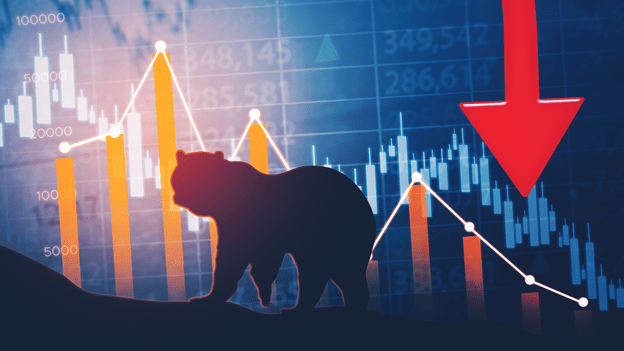How Long Do Bear Markets Last? The Answer Could Save Your Portfolio

Have you ever opened your portfolio and seen it drop by 20% or more and felt panic setting in?
If so, you’re not alone. That kind of drop usually signals a bear market, and it can feel like the world is ending.
But here’s the good news: bear markets don’t last forever. And if you understand what causes them, how long they typically last, and how they’ve played out in the past, you’ll be in a better position to stay calm and make smart decisions.
It starts with knowledge. Taking time to learn key investment terms to know can give you context during turbulent times. They’re tools that help you interpret what’s really happening in your portfolio and the broader economy.
When you understand the language of investing, you start to see patterns instead of panic.
What Is a Bear Market?
A bear market is when the market drops 20% or more from recent highs. It sounds dramatic and often feels even worse but it’s a normal part of how markets move over time.
Think of the market as going through cycles: there are growth periods (bull markets) and pullbacks (bear markets). You can’t have one without the other.
Since 1928, the S&P 500, one of the most closely watched stock indexes, has gone through 22 bear markets. And yet, long-term investors have still seen their portfolios grow significantly over time.
So… How Long Do Bear Markets Usually Last?
Based on historical data, the average bear market lasts about 11.4 months. That means most downturns are over in less than a year.
But here’s the catch: recovery takes longer. On average, it can take 2.5 years for the market to climb back to its previous peak after a bear market. That’s a long time to wait if you’re watching your portfolio every day.
But staying invested during these periods has historically paid off. If you panic and sell, you might miss the recovery when it comes.
Are All Bear Markets the Same? Not Quite.
Bear markets come in different shapes and causes. Here are the three main types:
1. Event-Driven Bear Markets
These are caused by unexpected shocks, think pandemics, wars, or major geopolitical surprises.
Example: In early 2020, COVID-19 triggered a steep market drop of over 30%. But that bear market lasted just about one month then the market bounced back quickly.
2. Cyclical Bear Markets
These happen during regular economic slowdowns or recessions. They tend to last longer and are harder to bounce back from.
Example: Rising interest rates, job losses, and falling corporate profits can all contribute to cyclical bear markets. They’re part of the natural rhythm of the economy but can stretch over many months, sometimes even longer than a year.
3. Structural (Secular) Bear Markets
These are the most painful and longest-lasting. They happen when there’s a deep imbalance in the financial system, like a housing bubble or major credit crisis.
Example: Japan’s market in the 1990s or the 2008 financial crisis are classic cases. Structural bear markets can cause declines of 50% or more and take years or even decades to recover from.
What Are the Shortest and Longest Bear Markets in History?
Let’s look at two extremes, one that passed in the blink of an eye, and another that felt like it would never end.
The Shortest: March 2020 (COVID-19)
- Drop: Over 30%
- Duration: Just 33 trading days
- Recovery: Market hit new highs within four months
Thanks to record-breaking stimulus, this bear market set a new record for speed both in how fast it fell and how quickly it recovered.
The Longest: 1929–1942 (Great Depression & WWII)
- Duration: Depending on the index and source, some bear markets lasted 33 to 61 months
- Drop: Up to 89% for the Dow Jones
- Recovery: Took years to return to previous highs
It took nerves of steel to stay invested during those times but those who did were rewarded in the long run.
What Should You Do During a Bear Market?
Here are some key takeaways to help you survive the next downturn:
- Don’t panic sell. History shows that staying invested often leads to better long-term results.
- Know your timeline. If you don’t need the money for a few years, short-term drops matter less.
- Diversify. Different assets react differently to market stress. Spread your risk.
- Keep perspective. Bear markets are normal. Since 1928, there’s been one about every 4 years.
Final Thoughts
You can’t avoid bear markets but you can prepare for them. Understanding how long they typically last and what drives them helps you avoid emotional decisions.
The next time markets drop, ask yourself: Am I reacting to headlines, or following a long-term plan?
Because in the end, it’s not about timing the market, it’s about time in the market.




